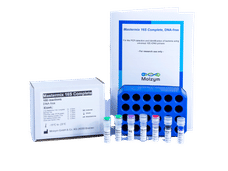Frost & Sullivan: The biobanking community to increasingly require innovative products in bio-storage applications
The global proliferation of disease-based regional and national biobanks for clinical research has triggered a massive interest in long-term sample storage conditions. Simultaneously, it has spawned a requirement for good storage practices and standard operating procedures (SOPs). Biobanks need to carefully evaluate complaint storage, sample shipment and data management procedures during the formulation of a strategic sample management plan. They are acknowledging the need to maintain sample integrity and viability by adopting new storage methodologies and solutions that will guarantee better sample quality to the research community.
Traditional methods of storage include storing samples in laboratory freezers at -20°C, -80°C and liquid nitrogen. These processes are being largely automated with the help of radio frequency identification (RFID) and micro electromechanical systems (MEMS) technologies.
However, in recent times, there has been a perceptible shift in preference towards room temperature storage. Vendors such as Biomatrica and IntegenX, Inc are developing reagents to stabilise the DNA and RNA so they last long under ambient temperature. This process effectively eliminates the need for freezer units and extra storage space.
Over time, it becomes difficult for biobanks and biorepositories to track and retrieve samples stored at ultra-low temperatures. Traditional methods of storage involve barcoding microplates, wherein the retrieval of a single sample from a microplate would involve thawing the entire plate, which will affect the freeze-thaw cycles of other samples. Therefore, under the new system, sample storage is carried out in microtubes and individual vials.
Earlier, equipment and robotic arms were designed to handle microplates; now, systems are flexible enough to cherry pick individual microtubes. For instance, TTP LabTech provides high-capacity storage for automated biobanking at -80°C; this system is capable of selecting a sample within 60 seconds. Other notable mentions are Hamilton Storage, which provides a scalable and flexible third-generation automated system for biobanking; and Matrical Bioscience, which provides automated sample storage management and retrieval systems. Most of the storage systems today offer robotic interfaces inside a chilled atmosphere to prevent the disturbance of unused samples.
“Biobanks’ interest in dry-state storing and eliminating freeze-thaw cycles has led to the introduction of many patented automated biobanking storage platforms for the samples requiring -20°C and -80°C. These platforms have the facility to store samples in both microplates and micro-tube format,” noted Frost & Sullivan Healthcare Senior Research Analyst Divyaa Ravishankar. “They ensure the continuous monitoring of samples even during picking.”
Most of the companies involved in long-term sample storage processes have indicated high use of Thermo Fisher Scientific and Micronic B.V’s 2D barcoded tubes. These tubes are permanently laser etched to provide traceability. However, in certain cases, too much of frost can hinder readability. To resolve this challenge, RFID and the MEMS technology have been incorporated to enhance tractability even under frosted conditions. While Sysmex Bioscience employs RFID for its product, Icebreaker cryovial, and Bluechiip Limited uses MEMS technology. These advancements provide real-time alerts and a temperature history of the sample, as it is important that the sample does not undergo wide temperature variations during a given period.
For storage of tissue samples, Provia Laboratories provides innovative human tissue biospecimen storage containers and kit solutions called Proviasette. These have been designed for efficient storage and tracking, thereby increasing the productivity of tissue biobanks.
“However, many challenges still lie ahead for solution vendors. Given that no two biobanks function similarly, it is tough to generalise a technology platform,” said Ravishankar. “A lot of custom work is required to suit the workflow processes of a biobank. At the same time, obtaining funding and ensuring financial maintenance of the biobanking infrastructure will become tougher in the long run.”
Biobanking comes with the inherent challenges of continuous monitoring of clinical samples and associated sample information, which requires a highly integrated set up. In addition, an exponential increase in the volume of samples is leading to issues with storage capacity and duration.
While small quantities of samples could contaminate the researchers handling them, large quantities of samples could task the researcher with maintaining consistency. These challenges are making a strong case for replacing manual protocols with automated ones.
The lack of high-quality and clinically annotated samples highlights the need for standardising sample handling and storage protocols globally. The paucity of standardised quality checking protocols for the pre-analytical phase creates roadblocks when comparing and sharing samples, especially when specimen volumes are likely to be high.
Biobanking also grapples with several ethical issues such as consent, personal integrity, privacy protection, safety of samples and access to data and stored samples. The laws and regulations pertaining to ownership, intellectual property rights and commercialisation discourage the use of resource material. Furthermore, the cross-border shipping of samples requires consent from donors. With the sole aim of safeguarding the donor information, governments in Norway and Sweden allow the analysis of samples but discourage their long-term storage.
All in all, a totally integrated system of hardware, software and consumable tools will be the way to ‘smart biobanking’. With the introduction of many technologies, forward-looking biobanks can retain sample quality/integrity by employing smart and smooth sample handling systems. “The cornerstone of every biorepository lies in the efficiency of its freezer inventory software or the LIMS employed,” observed Ravishankar. “The key objective is to enable researchers to locate and use biospecimens.”



























































